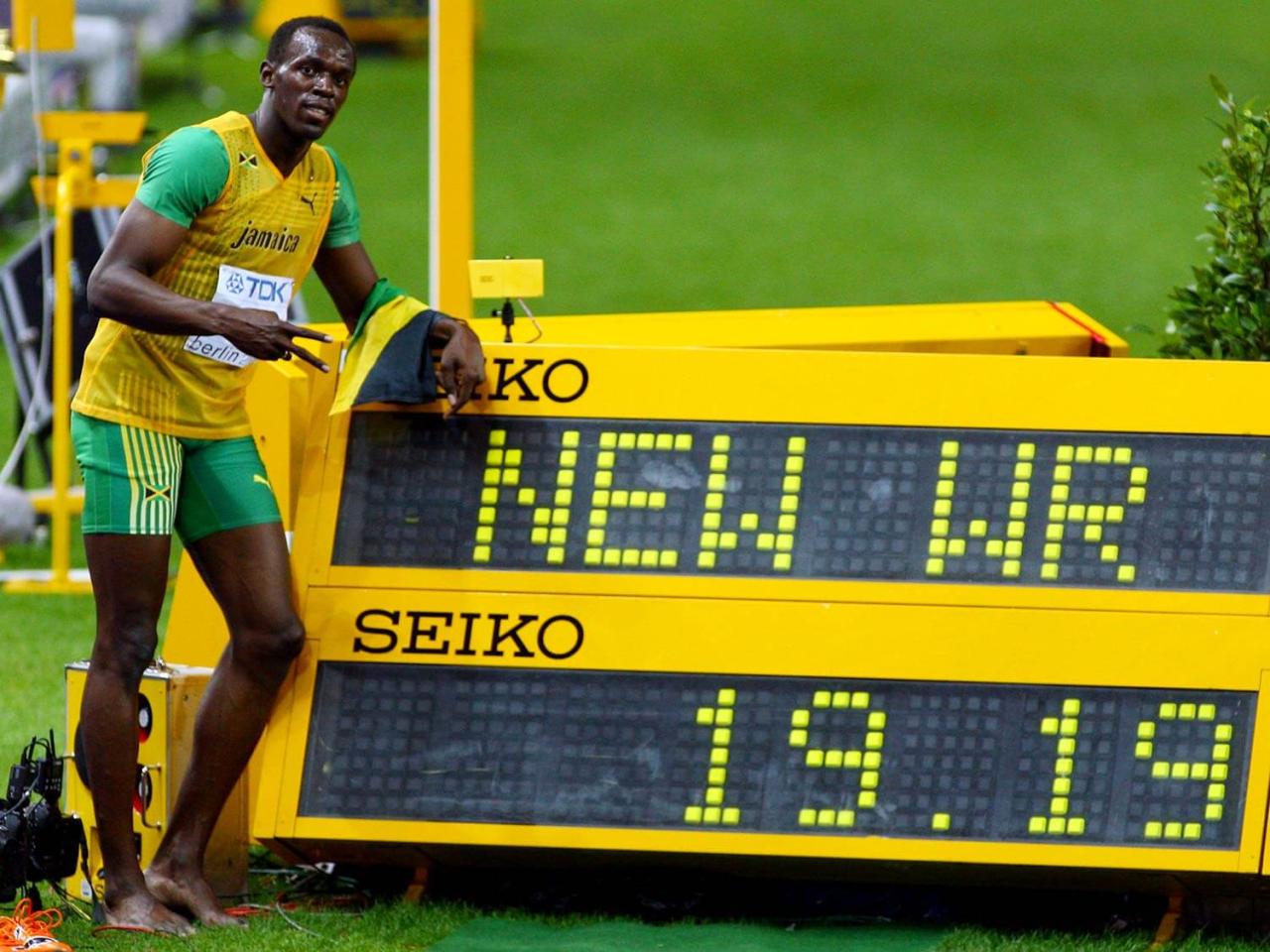In the relentless pursuit of excellence, the human spirit perpetually pushes the boundaries of what’s deemed possible. This unending drive is vividly showcased in the world of sports, science, technology, and countless other domains, where records are shattered daily. These aren’t just arbitrary numbers; they represent the pinnacle of human achievement, a testament to dedication, innovation, and the unyielding will to surpass previous benchmarks. The very notion of a “record” implies a standard to be broken, an invitation to aspire higher, faster, stronger, and smarter. This comprehensive article delves into the multifaceted phenomenon of record-breaking, exploring the underlying forces that propel individuals and collectives to new heights, the profound impact these achievements have on inspiration and progress, and the relentless cycle of setting new, seemingly insurmountable, challenges. We’ll unveil why the act of breaking records isn’t just about fleeting glory, but about the continuous evolution of human capability.
The Dynamics of Record-Breaking

The constant assault on existing records is not a random occurrence but the result of a complex interplay of advancements across various fields.
A. Human Optimization
Modern record-breaking in sports is increasingly a triumph of scientific optimization, transforming the athlete into a finely tuned machine.
- Advanced Training Methodologies: Gone are the days of rudimentary training. Today’s athletes benefit from highly specialized, data-driven regimens.
- Periodization: Strategically structuring training cycles to optimize peak performance at specific times, avoiding burnout and maximizing adaptation.
- Strength and Conditioning: Tailored programs focusing on functional strength, power, speed, and endurance, specific to the demands of their sport, often leveraging cutting-edge equipment and techniques like velocity-based training (VBT).
- Biomechanics Analysis: Using high-speed cameras and motion capture technology to analyze and refine movement patterns, optimizing efficiency, power transfer, and reducing injury risk. This allows for minute adjustments that can shave milliseconds or add inches to a performance.
- Nutritional Science: Athletes follow meticulously planned diets designed to fuel performance, accelerate recovery, and optimize body composition.
- Macronutrient Timing: Consuming specific ratios of carbohydrates, proteins, and fats at precise times before, during, and after training/competition.
- Micronutrient Optimization: Ensuring adequate intake of vitamins, minerals, and antioxidants to support physiological functions and reduce oxidative stress.
- Hydration Strategies: Personalized hydration plans to prevent dehydration, which can severely impair performance.
- Recovery Protocols: Recognizing that performance gains happen during rest, athletes employ sophisticated recovery techniques.
- Sleep Optimization: Prioritizing quality sleep, often monitored by wearable tech, as the fundamental recovery tool.
- Cryotherapy and Hydrotherapy: Utilizing cold water immersion, cryo-chambers, or contrast baths to reduce inflammation and accelerate muscle repair.
- Massage and Myofascial Release: Employing techniques like foam rolling and deep tissue massage to improve blood flow, reduce muscle soreness, and enhance flexibility.
- Heart Rate Variability (HRV) Monitoring: Using HRV data to gauge nervous system recovery and readiness to train, allowing for real-time adjustments to training load.
- Sports Psychology: The mental game is as crucial as the physical.
- Visualization and Mental Rehearsal: Athletes mentally practice perfect performances to build confidence and refine execution.
- Stress Management and Resilience: Techniques to cope with high-pressure situations, overcome setbacks, and maintain focus.
- Goal Setting: Developing clear, challenging, yet achievable goals to drive motivation and direct effort.
B. Technological Advancement
Technology provides the tools and insights that enable new levels of performance and measurement.
- Equipment Innovation: Continuous improvement in materials, design, and manufacturing processes leads to lighter, stronger, and more efficient equipment.
- Footwear: Running shoes with carbon fiber plates (e.g., Nike Vaporfly) that enhance energy return, leading to faster marathon times.
- Swimsuits: Low-drag, performance-enhancing swimwear (e.g., Speedo LZR Racer) that reduces resistance in water.
- Bikes: Aerodynamic designs and lightweight materials in cycling, making riders faster.
- Racquets/Clubs: Advanced materials and designs in tennis racquets, golf clubs, and other sports equipment that enhance power, control, or forgiveness.
- Performance Analytics and Data Science: The ability to collect, process, and analyze vast amounts of performance data is revolutionizing training and strategy.
- Wearable Sensors: GPS trackers, accelerometers, heart rate monitors, and power meters provide real-time data on every aspect of performance, allowing coaches to identify strengths, weaknesses, and optimize training loads.
- Video Analysis Software: Detailed breakdown of technique, movement patterns, and opponent strategies, providing objective feedback for improvement.
- Predictive Modeling: Using AI and machine learning to forecast performance, identify injury risks, and develop personalized training protocols based on an athlete’s unique physiological responses.
- Facilities and Environments: Purpose-built facilities are designed to optimize performance.
- Fast Tracks/Pools: Modern running tracks and swimming pools are engineered to minimize resistance and maximize speed.
- Altitude Training Centers: Controlled environments that simulate high altitude to induce physiological adaptations.
C. Rule Changes and Competitive Structure: Paving the Way
Sometimes, records are shattered due to intentional changes in the competitive landscape.
- New Rules: Adjustments to game rules can open up new avenues for performance. For example, changes in anti-doping regulations, equipment specifications, or game formats can directly influence records.
- Enhanced Competition: A rising tide lifts all boats. Increased global participation and heightened competition naturally push athletes to perform at their absolute best. The sheer number of athletes striving for excellence means that breakthroughs are more likely to occur.
- Professionalization and Funding: Greater financial incentives, professional leagues, and corporate sponsorships allow athletes to dedicate themselves full-time to their sport, accessing better coaching, facilities, and support staff.
The Broader Impact

Record-breaking transcends the immediate context of competition, leaving a lasting imprint on society and inspiring future generations.
A. Inspirational Catalysts
Records serve as powerful sources of inspiration, demonstrating the extraordinary potential of human endeavor.
- Motivating Aspiring Talent: Young athletes see records broken and are inspired to dedicate themselves, believing that with hard work, they too can achieve greatness.
- Challenging the Status Quo: Records challenge conventional wisdom about what’s possible, encouraging innovation and pushing boundaries in other fields. For example, Roger Bannister breaking the four-minute mile spurred a wave of subsequent record breaks.
- Human Resilience and Perseverance: Every record is a story of countless hours of effort, sacrifice, and overcoming setbacks. These narratives resonate deeply, reminding us of the power of persistence.
B. Driving Scientific and Technological Innovation
The pursuit of records often acts as a proving ground for new scientific and technological advancements.
- Sports Science Research: The desire to optimize performance fuels research into physiology, biomechanics, nutrition, and psychology, leading to discoveries that can benefit broader populations (e.g., understanding fatigue, injury prevention).
- Material Science: The quest for lighter, stronger, more efficient equipment pushes innovation in material science, with breakthroughs often finding applications in other industries (e.g., aerospace, medical devices).
- Data Analytics Tools: The sophisticated analytics developed for sports performance can be adapted for business intelligence, healthcare monitoring, and other data-intensive fields.
C. Economic and Social Impact
Record-breaking events can have significant economic and social consequences.
- Increased Fan Engagement: Record-breaking performances draw massive viewership, boosting media rights, merchandise sales, and overall interest in sports.
- Tourism and Local Economies: Major record-breaking events can attract tourists, generating revenue for local businesses and communities.
- National Pride: World records, especially in international competitions, can evoke strong feelings of national pride and unity.
- Commercial Endorsements: Record-breaking athletes become highly marketable, attracting endorsements and sponsorships that elevate their personal brands and further professionalize their sports.
D. Shifting Paradigms
When a long-standing, seemingly untouchable record falls, it can fundamentally shift perception.
- Redefining “Possible”: The breaking of a barrier that was once considered unbreakable (e.g., the four-minute mile) fundamentally alters human understanding of physical limits.
- New Training Philosophies: New records often validate or inspire novel training approaches, leading to widespread adoption of more effective methodologies across entire sports.
The Ever-Accelerating Cycle of Breaking Records
The nature of record-breaking is that it’s a continuous, self-reinforcing cycle. Each new record sets a higher bar, prompting further efforts to surpass it.
A. Marginal Gains Philosophy
The idea that small, incremental improvements across many different areas can collectively lead to significant overall performance gains. This has been popularized by teams like British Cycling. It emphasizes meticulous attention to every detail, no matter how small.
- Optimization of Every Variable: Analyzing and improving everything from sleep quality and recovery nutrition to equipment aerodynamics and mental preparation.
- Continuous Experimentation: Regularly testing new approaches, technologies, and training methods to find even the slightest edge.
- Data-Driven Adjustments: Using real-time data to make continuous, minor adjustments to training and competition strategy.
B. The Global Talent Pool
The globalization of sports and increased access to resources mean that exceptional talent is emerging from every corner of the world. This broader base of highly skilled individuals naturally increases the likelihood of records being shattered.
- Talent Identification: More sophisticated scouting networks and scientific methods for identifying potential at a young age.
- Democratization of Knowledge: Information about advanced training and nutrition is more accessible, even in developing nations, raising the overall standard of competition.
- Cross-Cultural Learning: Sharing of best practices and training methodologies across different countries and sporting cultures.
C. Specialization and Focus
As sports become increasingly professional, athletes are specializing earlier and focusing intensely on their chosen discipline, often dedicating their entire lives to perfecting their craft. This singular focus, combined with comprehensive support systems, leads to highly optimized performance.
D. The “Arms Race” Mentality
In many sports, breaking a record by one individual or team creates an immediate “arms race” among competitors, pushing everyone to innovate and train harder to reclaim the top spot. This competitive pressure is a powerful engine for progress.
Challenges and Ethical Considerations in the Pursuit of Records
The relentless drive to break records is not without its complexities and ethical dilemmas.
A. Anti-Doping and Fair Play
The temptation to gain an unfair advantage can lead to the use of performance-enhancing drugs (PEDs), undermining the integrity of records.
- Rigorous Testing: Continuous efforts by anti-doping agencies to develop more sophisticated testing methods and protocols.
- Athlete Education: Educating athletes about the risks of doping and promoting clean sport.
- Sanctions and Consequences: Implementing strict penalties for those who violate anti-doping rules.
B. Athlete Welfare and Longevity
The intense pressure and extreme training required to break records can take a toll on athletes’ physical and mental health.
- Risk of Injury: Pushing physical limits constantly increases the risk of severe injuries, which can cut careers short.
- Burnout: The relentless demands can lead to mental and emotional exhaustion, causing athletes to leave the sport prematurely.
- Post-Career Transition: Ensuring support systems are in place for athletes once their competitive careers end.
C. The Role of Technology and “Technological Doping”
The line between legitimate technological advancement and unfair advantage can be blurry.
- Equipment Regulations: Sports governing bodies face the challenge of regulating equipment to ensure fair competition while not stifling innovation (e.g., super shoes in running, high-tech swimsuits).
- Gene Doping/Bio-Hacking: The future ethical frontier where genetic modification or advanced biological interventions could create unprecedented and potentially unfair advantages.
D. Commercial Pressures
The massive financial stakes in record-breaking events can exert undue pressure on athletes and organizations to prioritize records over ethical considerations or athlete well-being.
E. Data Privacy
The vast amounts of biometric and performance data collected from athletes raise concerns about data ownership, privacy, and potential misuse.
The Future of Record-Breaking
The trajectory of record-breaking points towards an even more interconnected and data-driven pursuit of human potential.
A. AI-Driven Personalization
Artificial intelligence will play an increasingly dominant role in tailoring training, nutrition, and recovery plans to an unprecedented level of individual specificity, potentially leading to even more precise performance peaks.
B. Virtual and Augmented Reality Training
Immersive technologies will allow athletes to practice complex skills and strategies in simulated environments, reducing physical wear and tear while enhancing learning.
C. Deeper Understanding of Genetics and Epigenetics
As scientific understanding advances, insights into an individual’s genetic predispositions and how environmental factors influence gene expression (epigenetics) could further personalize training and unlock latent potential.
D. Human-Machine Collaboration
In some fields, records might increasingly be a result of synergistic human-machine collaboration, where technology enhances innate human abilities rather than just being a tool.
E. Exploration of New Frontiers
As existing records become more challenging to break, humans will continue to seek new domains for competitive excellence, whether in emerging sports, extreme challenges, or entirely new forms of human endeavor. The boundaries of what is considered a “sport” or “achievement” will continue to expand.
Conclusion
The constant shattering of records is a powerful and enduring testament to the relentless spirit of human aspiration. It’s a complex dance between innate talent, meticulous preparation, scientific innovation, and an unyielding will to overcome every obstacle. From the meticulously calibrated training regimens of elite athletes to the groundbreaking innovations in materials science and data analytics, every new record serves not just as a benchmark of current achievement but as a launchpad for future endeavors. While the challenges and ethical considerations in this relentless pursuit are significant, the drive to break barriers will continue to inspire, pushing the boundaries of what we believe is possible and proving, time and again, that human potential is truly boundless.











